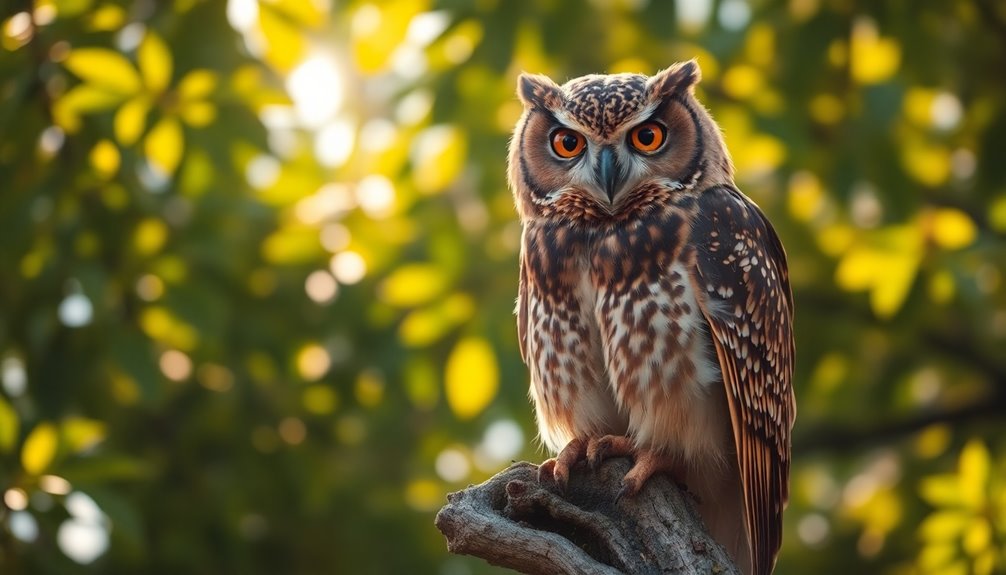The number 00 holds immense significance, representing infinite potential and the cyclical nature of existence. It symbolizes unity and completeness, creating a space for personal transformation and growth. In biblical contexts, numbers reveal deeper truths, and zero invites you to consider new beginnings. The psychological effects of this number can evoke strong emotions and influence your decisions. Understanding zero's spiritual implications can guide your journey through change and foster resilience. If you're curious about how this mysterious number relates to your life, you might uncover even more fascinating insights just ahead!
Key Takeaways
- The number 00 symbolizes infinite potential and serves as a profound starting point for new opportunities and transformative experiences.
- In spiritual contexts, 00 represents unity and completeness, highlighting the interconnectedness of all existence and the cyclical nature of life.
- The concept of zero, or 'shunya' in Hinduism, reflects a supreme state of awareness from which creation emerges, emphasizing spiritual growth.
- Emotionally, 00 can evoke feelings of comfort and safety, acting as a reset point that allows for personal growth and change.
- Culturally, 00 may carry different interpretations, influencing perceptions and behaviors, making it a number of significant psychological impact.
Spiritual Significance of Zero

When you explore the spiritual significance of zero, you'll find it embodies profound concepts that resonate deeply within various belief systems.
Zero represents infinite potential and endless possibilities, symbolizing eternity and evolution. Visually, it resembles a circle or an egg, embodying the cyclical nature of existence, including birth, death, and rebirth.
Zero signifies unity and the interconnectedness of all existence. It suggests completeness, reminding you that every aspect of your spiritual journey contributes to your wholeness. Additionally, the introduction of zero as a crucial placeholder in numeral systems greatly enhanced the efficiency of mathematical representation.
In Hinduism, the term 'shunya' connects zero to the supreme state of awareness, illustrating the void from which all creation emerges.
Culturally, zero holds significant value, especially in Japanese design, where it represents 'ma,' the space between objects.
Its conceptualization in the Indian subcontinent around 500 AD marked a pivotal moment in mathematics and spirituality.
Zero symbolizes a positive reset, a space awaiting transformative experiences.
Biblical and Numerological Insights

Zero's spiritual significance opens the door to understanding biblical numerology and its profound insights. In the Bible, numbers carry symbolic meanings that reveal deeper truths about faith and existence.
For instance, the number one emphasizes unity and the oneness of God, foundational in passages like Deuteronomy 6:4. Moving to number two, it symbolizes witness and division, highlighted when Christ sends disciples out two by two (Luke 10:1).
The number three represents perfection, seen in the Holy Trinity, while number four symbolizes creation and earthly stability, referencing the four cardinal directions. Additionally, the common numbers used in Scripture help to enhance biblical interpretation and understanding.
Grace is encapsulated in number five, which appears in various offerings and elements of the Tabernacle. Meanwhile, number six embodies humanity's limitations, reflecting our imperfect nature.
Spiritual perfection is linked to the number seven, marking completion in God's creation. New beginnings are indicated by the number eight, as seen in Christ's post-resurrection appearances.
Each of these numbers helps you grasp the spiritual narratives interwoven throughout Scripture, guiding your understanding of God's divine plan and your place within it.
Frequent Appearances and Messages

Throughout history, numbers like 137 and 42 have consistently appeared in various fields, intertwining science, mysticism, and culture.
Take 137, for instance. It represents the fine-structure constant, a fundamental aspect of physics that defines electromagnetic interactions. You'll find it at the core of quantum theory and relativity, captivating scientists from Wolfgang Pauli to Carl Jung. Its precise role in nature, measured to the 11th decimal place, highlights its importance in understanding subatomic behavior. This universal constant governs fundamental processes like star burning and atomic existence, showcasing its significance in the cosmos. Additionally, the implications of 137 extend to predictive modeling, allowing scientists to make informed forecasts in various scientific domains. The exploration of scientific evidence supporting various phenomena can sometimes lead back to this intriguing number.
On the mystical side, 137 holds significant weight in Kabbalah, marking lifespans of biblical figures and offering spiritual insights. It symbolizes enlightenment and light, bridging the gap between scientific inquiry and spiritual exploration.
Meanwhile, the number 42 captures attention in popular culture as the "Answer to the Ultimate Question of Life, the Universe, and Everything," made famous by Douglas Adams. It pops up in various media, adding to its cultural iconicity.
Whether you're delving into the realms of physics or exploring mystical traditions, these numbers resonate, offering messages that span across disciplines and challenge your understanding of existence.
Emotional and Psychological Effects

Numbers wield a surprising emotional and psychological power over individuals, shaping perceptions and influencing behaviors in profound ways. You might find that certain numbers evoke strong feelings, whether fear, comfort, or even anxiety, depending on their cultural significance. For instance, if you've grown up believing that 13 is unlucky, you may avoid it in critical decisions, like choosing a wedding date.
Cultural conditioning deeply affects how you perceive numbers. If you live in an environment steeped in superstition, those beliefs can influence your daily actions, prompting you to engage in rituals that help manage anxiety linked to "bad" numbers. This phenomenon can escalate to magical thinking, particularly in individuals with OCD, leading to complex behaviors that are invisible to others yet profoundly distressing for you.
Moreover, your decision-making processes are often swayed by these numerical biases. You might prefer prices that end in .99, perceiving them as more authentic.
Ultimately, understanding these emotional and psychological effects can help you navigate the intricate relationship between numbers and your behavior, revealing the often irrational yet powerful impact they hold over your life.
Practical Guidance for Embracing Change

Change can be daunting, especially when you consider the emotional baggage tied to previous experiences. To navigate through this, reframe your mindset; see change as a positive force that opens up new opportunities. Recognize that change is inevitable and often leads to growth, as it enhances adaptability and resilience. Embracing unconditional love during this period can provide the emotional support necessary for a smoother transition. Furthermore, developing your Cultural Intelligence (CQ) can equip you with the skills needed to effectively navigate diverse environments during times of change. Understanding that many people have faced similar challenges can provide perspective and strengthen your resolve to embrace change, especially as narcissistic abuse is a common experience for many. Additionally, practicing stress management techniques can help you cope with the emotional turmoil that often accompanies change.
Incorporating antioxidant-rich foods into your diet can also bolster your mental clarity, aiding in your overall well-being during transitions.
Stay informed about potential changes to avoid being blindsided, and work on developing flexibility in your habits and thoughts.
Set clear, SMART goals that incorporate change as a normal part of your journey. Define actionable steps and necessary resources, creating a detailed change management plan to guide you.
Don't forget to build a support network of friends, family, or colleagues who've faced similar changes; they can offer valuable insights and encouragement.
Maintain open communication throughout the process, ensuring all stakeholders feel engaged. Regularly assess your progress and adjust as necessary to stay on track.
Practice gratitude and focus on your personal growth during this time. By using feedback and reflections, you'll refine your strategies for future changes, making each transition smoother and more manageable.
Embrace change, and you'll find that it can lead to transformative experiences in your life.
Symbolic Interpretations of Zero

Zero holds a unique place in both mathematical and philosophical realms, symbolizing a multitude of interpretations that extend beyond mere numerical value. You might see zero as a representation of infinite potential, acting as a starting point for boundless opportunities. It embodies the cyclical nature of existence, illustrating how life continually flows through cycles of birth, death, and rebirth.
In spirituality, zero signifies unity and completeness, emphasizing the interconnectedness of all existence. This concept reflects a circular journey of awakening, where every ending is merely a new beginning. You can also view zero as a positive reset, a space free from negativity, inviting transformative experiences.
Mathematically, zero serves as the identity element in addition and an absorbing element in multiplication, showcasing its unique duality. It poses philosophical challenges regarding nothingness, yet remains essential in understanding numerical systems. The study of zero has been influential in various fields, including linguistics and cognitive models, which explore how language shapes thought and perception.
Across various cultures, zero has deep roots, from ancient Indian philosophies to its integration in modern computing. Recognizing these symbolic meanings lets you appreciate zero not just as a number, but as a profound representation of existence, balance, and potential.
The Journey of Spiritual Growth

Throughout your journey of spiritual growth, you'll often encounter various stages that reflect your evolving understanding of self and existence.
Initially, you might find yourself in a dualistic mindset, viewing the world in black-and-white terms. Here, you cling to rules and dogma, feeling a strong sense of certainty in your beliefs. This stage shapes your ego and social identity, guiding you through societal roles.
As you progress, you'll transition into recognizing the complexity and nuance of life. This phase encourages you to explore different perspectives and challenge established norms, which may lead to uncertainty and doubt. Your faith becomes more practical, focusing on personal growth. This stage is crucial for spiritual maturity and deeper self-understanding.
Eventually, you'll reach a stage of awareness and mindfulness. Here, you'll let go of ego-driven identities and embrace authenticity. You'll learn to accept the paradoxes of existence and recognize the limitations of dualistic thinking.
Finally, you'll engage with life from a place of unity. You'll actively participate in responding to the needs of others, embodying compassion and love. In this mature stage, you'll realize your connection with the Divine, allowing Spirit to express through you, fostering a desire to leave a positive legacy.
Trusting Divine Guidance and Support

Many people find comfort in trusting divine guidance and support during uncertain times. When you place your faith in God's plan, you gain the courage to move forward, even when the future feels unclear. This trust helps you let go of past burdens, assuring you that your current steps are part of a greater journey.
God's guidance, rooted in eternal wisdom and love, leads you toward growth and new opportunities. Turning to God during overwhelming moments provides emotional comfort and fosters a sense of connection. Engaging in prayer and reflection not only offers clarity but also strengthens your relationship with the divine.
Seeking counsel from spiritually mature individuals can further enhance your emotional support, grounding you in biblical promises that reassure you of God's presence. As you navigate challenges, remember that waiting on God's timing often brings clarity and perspective. Trusting in divine guidance can significantly improve your mental health and well-being, reinforcing the idea that you are not alone on this journey.
Forgiving yourself and others is essential for moving on, releasing the weight of resentment. Trust that your story is one of redemption and new beginnings, filled with the promise of something good. Embrace this divine guidance, and allow it to illuminate your path forward.
Frequently Asked Questions
How Do Different Cultures Interpret the Number Zero?
Different cultures interpret the number zero in unique ways. In Buddhism, for instance, it symbolizes 'emptiness' or 'void,' reflecting philosophical beliefs.
Meanwhile, in Western contexts, zero's often seen as a placeholder in mathematics, crucial for calculations.
In some cultures, the way you communicate about zero can vary, using direct or indirect methods.
Understanding these interpretations helps you appreciate the number's significance across diverse societies and its role in shaping mathematical thought.
What Are Some Common Superstitions Related to Zero?
You won't find many superstitions related to zero.
Unlike numbers such as 7 or 13, zero isn't associated with luck or bad omens across cultures.
Instead, it serves more as a mathematical concept than a superstitious symbol.
While some might view it as a representation of the void or infinity, it generally lacks the emotional weight that other numbers carry.
Can Zero Have Negative Connotations in Any Context?
Yes, zero can definitely have negative connotations in various contexts.
For instance, scoring zero on a test often means failure, while a zero-growth economy signals stagnation.
In science, a zero reading might indicate an error, and in finance, zero savings can reflect instability.
Even in language, phrases like "zero-sum" imply a loss for someone.
How Does Zero Relate to Modern Mathematics and Technology?
Zero plays a vital role in modern mathematics and technology. It serves as the additive identity, helps solve equations, and acts as a boundary between positive and negative numbers.
In technology, zero forms the backbone of binary code, enabling data representation and programming logic. You'll find it essential in algorithms, error handling, and even in advanced concepts like calculus.
Its impact is evident in everything from smartphones to complex mathematical theories.
Are There Historical Events Tied to the Discovery of Zero?
Yes, there are significant historical events tied to the discovery of zero. You can trace its earliest representation to the Sumerians around 300 B.C.
In India, Brahmagupta's work in 628 A.D. introduced zero as a number, establishing rules for its arithmetic use. This concept spread through cultures, influencing mathematicians like Fibonacci, who helped bring these ideas to Europe.
Each step in zero's journey shaped modern mathematics and technology, making it crucial to our understanding today.
Conclusion
In exploring the meaning of zero, you've uncovered its profound significance in spirituality and daily life. Embracing this mysterious number can lead to personal growth and transformation. Remember, zero isn't just an absence; it's a powerful symbol of potential and renewal. Trust in the divine guidance surrounding you as you navigate changes and embrace new beginnings. By understanding zero's messages, you can foster a deeper connection with yourself and the universe. Keep this knowledge close as you journey forward!











